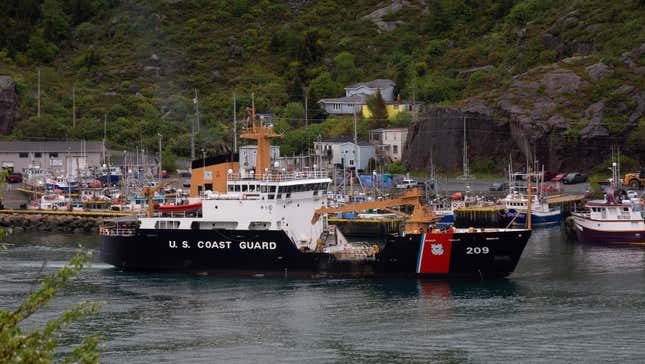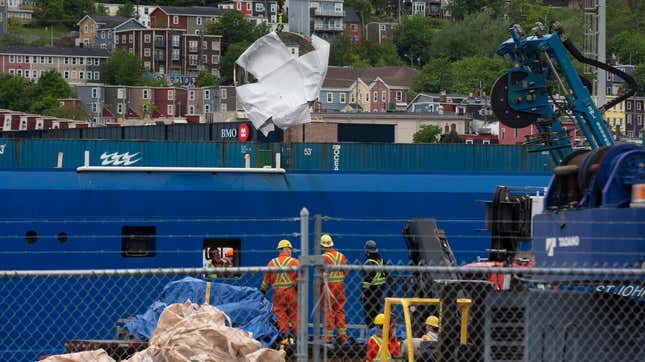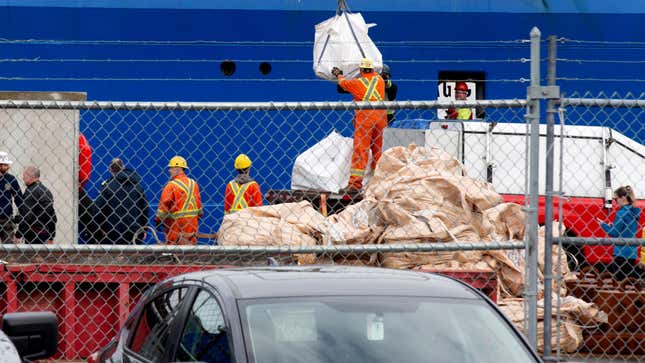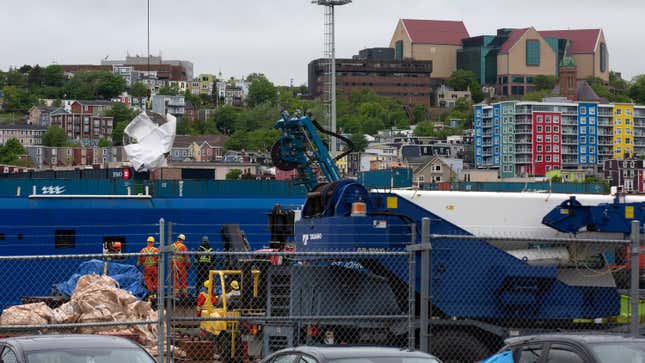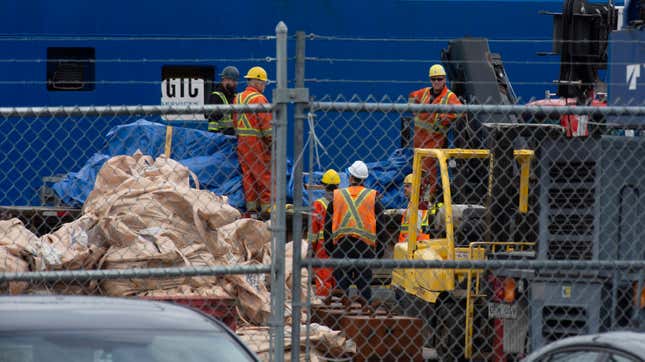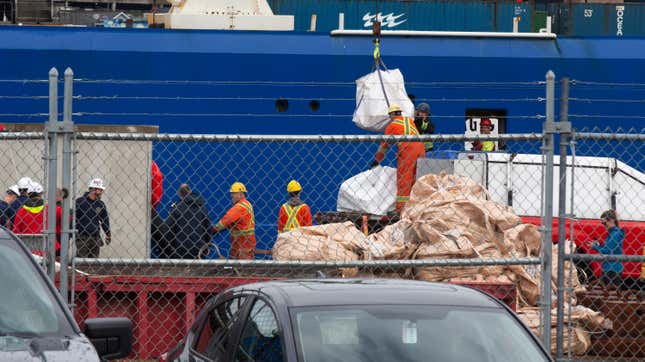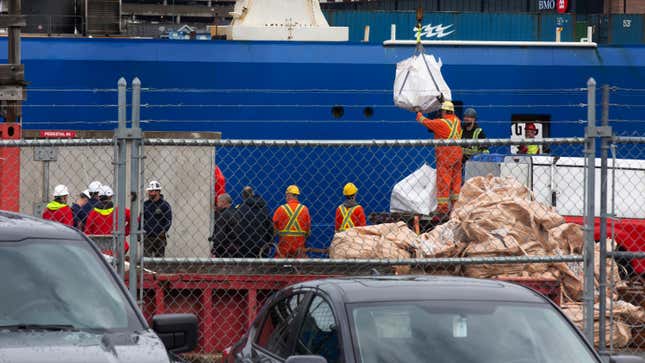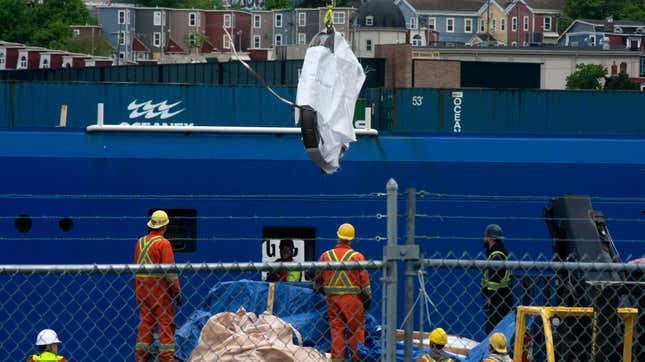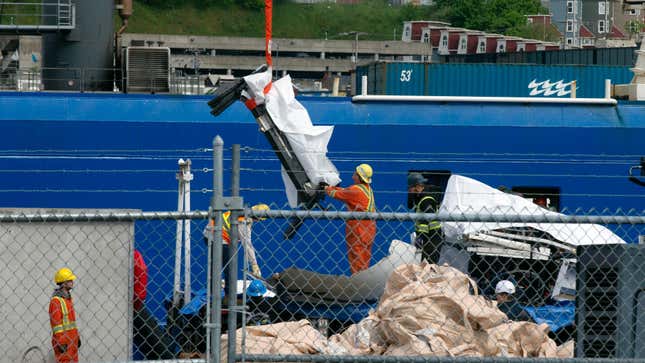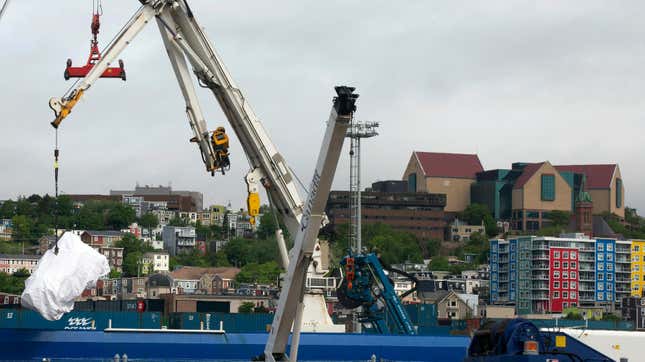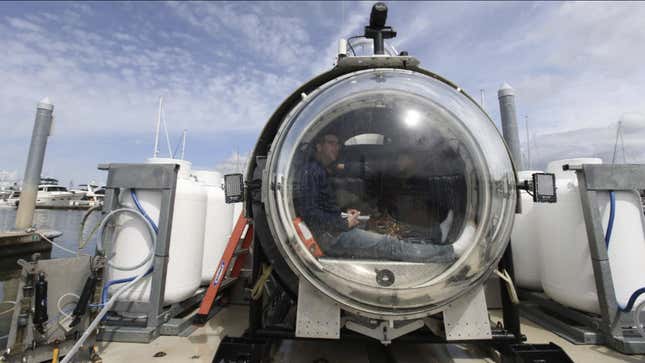
Pelagic Research Services is recovering debris from the Titan submersible which fatally imploded while journeying to view the Titanic wreckage last week, killing all five crew members on board. Search and rescue teams searched more than 700 square miles over four days in a mission that ended abruptly when an ROV discovered two debris fields containing what appeared to be pieces of the Titan.
The larger of the two sites contained the nose cone, outside pressure hold, and the front and bell of the pressure hull, while the other end of the pressure hull was found at the second, smaller debris site.
Expert Paul Hankins, a director of the Salvage Operations and Ocean Engineering for the U.S. Navy, said at a press conference on Thursday that the remnants of the Titan were found 1,600 feet from the bow of the Titanic, adding that all indicators point to a “catastrophic loss of pressure” and an implosion in the water column of the Titan.
The recovered debris could shed light on what really happened as the vessel began its descent to the Titanic wreckage site, and Carl Hartsfield of the Woods Hold Oceanographic Institution told AP News that there could be electronic data in the debris. “Certainly all the instruments on any deep sea vehicle, they record data. They pass up data. So the question is, is there any data available? And I really don’t know the answer to that question,” he said Monday.
New pictures show the debris being airlifted from the ocean’s floor, roughly 12,500 feet beneath the water’s surface, to a Canadian Coast Guard pier, and Pelagic Research Services told AP News its team is “still on a mission,” but can’t comment on the continued investigation.
The company added: “They have been working around the clock now for ten days, through the physical and mental challenges of this operation, and are anxious to finish the mission and return to their loved ones.”
You can click through to see more images of the debris arriving ashore.


